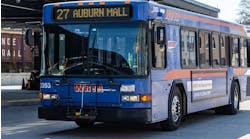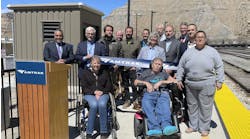Enjoying the latest episode of “House,” as I’m known to do of a Monday evening, my jaw dropped when T-Mobile aired its latest commercial for the MyTouch phone. This was not so much in response to the imitation of a well-known series of Apple ads, but in the somewhat audacious claim that its U.S. network was ‘4G.’ Now I have no problem in T-Mobile panning AT&T as the quality of the latter’s network leaves a lot to be desired, but for T-Mobile to claim that its network is 4G puts a new twist in how far carriers will go with their marketing campaigns.
T-Mobile and its 4G Claims
On November 2, T-Mobile announced that its mobile network was now available in 75 U.S. markets using High Speed Packet Access technology known as HSPA+, theoretically capable of speeds up to 21Mbps, though in reality achieving download speeds approaching 5Mbps. Up until that point, HSPA+ was classed as an enhanced 3G technology based on the Universal Mobile Telecommunications System (UMTS) 3GPP standard. The next generation of mobile broadband technologies are generally considered fourth generation or ‘4G,’ these being LTE and WiMAX. The main advantages of 4G over 3G are (a) an all-IP architecture, (b) significantly higher throughput, and (c) low latency. Telia Sonera rolled out the first commercial LTE networks in Scandinavia in 2010 and, at the LTE North America conference in Dallas this month, reported their service supports bursting up to 80Mbps with average end-user download speeds of 20-40Mbps, all for just $69/month.
In the U.S. Verizon intends to launch LTE in 38 markets by the end of 2010, with AT&T following with a (welcome) LTE upgrade to its HSPA network in 2011. Sprint has already staked its 4G claim with the commercial launch of WiMAX across the United States with download speeds averaging 5Mbps, bursting to 10Mbps — impressive but way short of what Telia Sonera has achieved with LTE, and the true promise of 4G mobile broadband.
T-Mobile HSPA+ Coverage (November 2010) – Red = Live, Blue = Coming Soon
While the Big Three (Verizon, AT&T and Sprint) had announced plans to move to 4G in the form of LTE or WiMAX, T-Mobile was languishing behind with its considerably smaller 3G HSPA coverage footprint. So in an impressive display of hubris, T-Mobile just decided that, as its HSPA+ network was approaching the lower end of what was possible with WiMAX and LTE, it was in effect ‘4G-like’ and thus, to all intents and purposes, exactly the same. Bang, instant 4G network without the hassle of actually deploying one!
Amazing to what lengths a marketing department is prepared to go when backed into a corner (or in this case, a technological dead-end). The inevitable backlash from other carriers came swiftly; the T-Mobile presenter was harangued on stage in Dallas last week, and appeared very uncomfortable trying to defend his company’s marketing claims in a room full of LTE engineers. Philip Solis of ABI Research sums up the state of play pretty well when he explains that HSPA+ is the end of a 3G roadmap, while WiMAX and LTE are the beginning of 4G roadmaps. T-Mobile’s move smacks of desperation not to be left out of the 4G party.
So why am I bothered about all this?
Consumers don’t care whether a technology is 3G or 4G as long as their mobile broadband is faster and they can stream more video to their smart phone more reliably. But for enterprise, industrial and vertical applications including mass transit, it’s not just about perceived speed. Network administrators actually do care about quality of service, latency, VLANs and security, and the end-to-end IP architecture of a true 4G network — these are things that only LTE and WiMAX can provide today; HSPA never will. So if you’re looking at how 4G can work within a transit agency, don’t be fooled by marketing banter; talk to Verizon, Sprint and AT&T about 4G and how your investment in mobile data services today will set you on the right road to the future.
Wi-Fi Hotspot Numbers Surge
Moving on, a quick update on my last article about Wi-Fi and whether it can increase ridership when deployed on mass transit as a free service to passengers. This week JiWire, a leading mobile audience media company based in San Francisco, published its Q3/210 Insights Report detailing Wi-Fi usage trends in the United States and worldwide. Despite the increase in personal mobile broadband subscriptions, Wi-Fi hotspots are growing; the number of locations increased by almost 20 percent compared to the same period in 2009, with the United States topping the league with more than 93,000 public Wi-Fi locations. Of that number, 53.9 percent are free to use. But the most interesting figure for mass transit agencies is that 88 percent of mobile business travelers (which includes commuters) seek out public Wi-Fi specifically when traveling.
Mass transit Wi-Fi at rail and bus stations, and on the vehicles themselves, is not a large enough category for JiWire to call out within their metrics, but the indicators suggest that Wi-Fi would be an attractor if available. So if you’re thinking of deploying Wi-Fi to serve your passengers, then it looks like a sure bet; just make sure you’re connecting your hotspots to the right type of 4G network.
Jim Baker is managing partner at Xenventure, a market strategy and private equity firm based in San Francisco and London. A C-level wireless industry veteran, Baker has been involved in many deployments of wireless technologies on passenger transportation worldwide and is a recognized industry expert on Wi-Fi, 3G and 4G convergence. He is chair of the Technology Committee at the Joint Council on Transit Wireless Communications, which is developing a strategic plan for implementation of wireless technologies in mass transit. Contact Baker via LinkedIn or follow him on Twitter.




